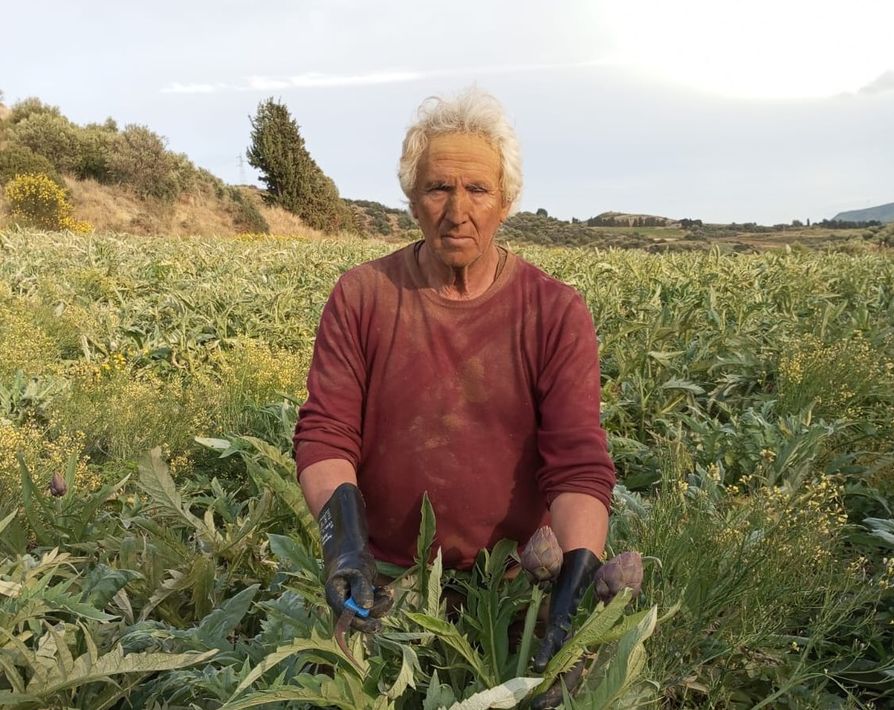April 23, 2024
Of
emanuel
by Angela Sciortino
Relaunch artichoke cultivation and activate deep and lasting synergies with tourism and restaurant entrepreneurship. All with the aim of curbing depopulation and the hemorrhage of young people from the rural areas that are located a handful of kilometers from the famous Cefalù, an obligatory tourist stop for those who want to complete the Arab-Norman route of northern Sicily.
This is the objective of a mobilization (never seen before) of local administrators, associations, producers and even housewives, around the main agricultural product of the Torto Valley, in northern Sicily. Here, on the initiative of the municipal administration of Lookan agricultural center known to most for its famous and celebrated artichokeit was decided to dedicate not a simple festival to the thorny vegetable (as has happened in the last 41 years), but a nine-day festivalfull of events and demonstrations.
The Cerdese artichoke
The festival dedicated to the artichoke
The Cynara Festival – which incorporated the usual annual festival which has always been celebrated on 25 April on the occasion of Liberation Day – it started on April 20th and will end on the 28th of the same month. For 2024 it enjoys a substantial contribution (229 thousand euros) foreseen by the connection to the financial law to which is added another 48,500 euros by way of sharing for the establishment of the “Sagra del Articiofo” Foundation which the Sicilian Region wanted to put on the table to the relaunch – through the organization of structured events – of the cultivation and valorisation of the Cerda artichoke. Artichoke which is actually cultivated throughout the Torto and Imera Valleys and, beyond Cerda, affects several other municipalities: Sciara, Campofelice di Roccella and Termini Imerese.
The Municipality of Cerda and its vision on the artichoke
Among the projects of the administration led by Salvatore Geraci – who is also a regional deputy – there is the establishment of “De.Co Artichoke from Cerda”. First step of a journey with a final goal there request from the PGI. But to achieve this it is necessary for farmers to overcome that atavistic individualism which in recent decades has been the main cause of the decline of the crop whose area today is reduced to little more than 700 hectares: thousand less than a few decades ago. Illusioning themselves that their commercial system could not be called into question by the rapid evolution of the supply chain, they never thought of coming together in associative structures capable of presenting themselves on the market with critical masses interesting for fresh vegetable players. And so for the companies in this rather small-sized area (15-20 hectares the largest) there has been an inevitable decline.
“I remember that from Cerda, when I was just a boy, the trucks loaded with our artichoke left for Naples or Milan where they were much appreciated and sought after”, he states with a certain nostalgia Lillo Dionisio, 68 year old farmer – 20 hectares of vegetables, half of which are artichokes – which passed to his son Gabriele.
Not just artichokes
Ever-increasing production and transportation costs have discouraged many farmers who preferred to reduce the areas allocated to artichokes and have diversified production by also dedicating themselves to the cultivation of other vegetables such as fennel, broccoli and broccoli. Without organization, the Northern way is no longer worthwhile. And the Dionisios, who collect 6-7 thousand flower heads a day, especially in the peak period, have dedicated themselves to local markets: two points for direct sales, one in Cefalù, the other in Campofelice di Roccella; five farmer’s markets between Palermo, Cefalù and Campofelice di Roccella, and then supplies to retailers in nearby towns.
Salvatore Cappadonia
The difficult relationship with the market
Who has not given up on the relationship with the wholesale markets is Salvatore Cappadonia, 50 years and a 15 hectare company 50% invested in artichokes. For its harvest which begins at the end of November and generally lasts until the first fortnight of May, the main outlet is given by wholesale markets in Palermo and Villabate (Pa). But he is not satisfied: “In these markets a lot of non-Italian goods arrive with which we cannot compete on price. We are penalized by the EU-Egypt bilateral agreements which allow the entry of artichokes at zero duty precisely in the period in which we also produce them. This is unfair competition: we are faced with the absence of commercial equity because the rules that we must respect in all fields from taxation to social security, from food hygiene to the control of plant diseases and parasites in Italy are more stringent”.
The drought blow: artichoke production halved
This year, due to the drought and the anomalous heat of a spring that arrived very early, artichoke production will suffer a drop of 40-50 percent. And the next campaign doesn’t look any better either. For irrigation, the artichoke district uses water from the Rosamarina di Caccamo dam which, like all the artificial reservoirs in Sicily, is practically dry: the little water it contains is intended for drinking purposes in Palermo and for the summer months in where the artichoke fields are planted, the distribution of irrigation water is not foreseen. It will only be suitable for those who have not abandoned the wells and have built basins for water storage. In the plain, even after months in which it rained very little, the aquifer is about ten meters deep and sampling is not problematic.

Lillo Dionisio
Cutting-edge farmers, but not in product presentation
The cultivation technique is no longer a mystery for the farmers of this area: they have been practicing it for decades and have also equipped themselves and adapted to make it more sustainable. “Thanks to the favorable pedoclimatic conditions we use very few agrochemicals and, in any case, in full compliance with the relevant technical standards. We, for example, only carry out two interventions and only if necessary: one to control powdery mildew, the other for aphids”, specifies Lillo Dionisio.
But what lacks it’s a plus modern product presentation. In most cases it is still sold in bundles of twenty flower heads and rarely in boxes. “The price that appears is identical, so why increase costs?” asks Dionisio.
Then there would be the match organic to play. “We thought about it, but doing it just for the prize is useless. Sicily lacks an organic logistics platform of adequate size that can absorb our production”, says Cappadonia.
The relaunch strategy in three moves
To relaunch this product that was once the identity of a territory where some restaurateurs have made their fortune by focusing on local products, experts and politicians have already designed a strategy for the verticalisation of the supply chain.
There are three directions to focus on: the diffusion of the Cerda artichoke as a fixed ingredient in the menus of the most qualified Sicilian restaurants, which can constitute a sales pool with a high image content; the promotion of supply chain agreements with some logistics platforms in upper Piedmont, Liguria, Lombardy and Emilia Romagna; the transformation at structures already operational in Sicily. All preceded by a strong aggregative will, without which the strategy can hardly be put into practice.
Cerda artichoke, always in the heart of the farmers of the Torto valley
However great the difficulties of producers throughout the Torto Valley, the Cerda thorny artichoke is always in their hearts and they hope that 2024 can be the year in which the recovery begins. “Our artichoke has no rivals in Italy,” says Lillo Dionisio. The usual parochialism or truth? “You have to try it to believe it,” challenges Dionisio. The chorus of producers is unanimous: “The variety that has always been grown here traditionally produces flower heads with a unique flavor and consistency.” Nutritionists are of the same opinion. “Thanks to its purple pigmentation, the Cerda artichoke is very rich in antioxidants, essential for human health, which – in this cultivar – is found in much higher percentages than other varieties”, explains Simona Spoto, a nutritional biologist from Palermo .
The Cerda spiny artichoke has a fleshy heart and tender but at the same time crunchy bracts and lends itself to any preparation: from raw to carpaccio, to roasted on the grill, as a filling, as a base for a rich omelette”.
At the Cynara Festival, this versatility in the kitchen will be witnessed by Giusina Battaglia, a well-known presenter of the successful TV gastronomic format “Giusina in cucina” on the Food Network and who since last January has also been an integral part of the cast of “È semper Mezzogiorno” on Raiuno.
Also present is the Ladies Brigade of Cerda, six passionate women who have put together a rich recipe book and who genuinely bring traditional dishes to life on the tables, inherited from the stories of mothers and the memories of grandmothers.
Does artichoke rhyme with wine?
This year the Cerda artichoke even landed at Vinitaly where it was demonstrated that those prejudices of “incommunicability between artichoke and wine” can be overcome. The first ally in this challenge is the Monreale Doc. Says Mario Di Lorenzo, producer and president of the prestigious DOC which has recently renewed its production regulations: “It’s a gamble that we wanted to undertake with the Cynara Festival. Our production specification vines, centered on Catarratto, Perricone and Syrah, produce wines that can go well with artichoke-based recipes”.

Tags: SICILY DROUGHT HALVES PRODUCTION CERDA ARTICHOKE RELAUNCH PRODUCT FESTIVAL








